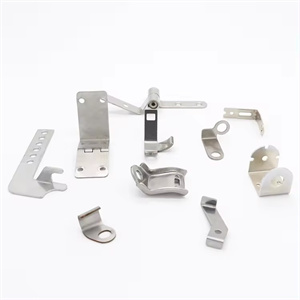The advantages of high-precision stamping are very significant:
Minimal dimensional error: able to control the dimensional deviation of parts within a very small range, ensuring perfect fit between parts. For example, in precision instrument manufacturing, high-precision stamped parts can achieve micrometer level accuracy, ensuring precise measurement and stable operation of the instrument.
Excellent surface quality: The surface of the stamped parts is smooth and even, without obvious defects or defects. This is crucial for some products with high appearance requirements, such as the outer shell of high-end electronic products.
High precision stamping is widely used in many fields:
Automotive industry: Many precision parts in automotive engine systems, transmission systems, and electronic systems rely on high-precision stamping processes.
Medical industry: Micro parts in medical devices and components of surgical instruments require high-precision stamping to ensure their performance and safety.
The electronics industry: high-precision stamping technology is indispensable for the packaging shell and precision connectors of chips.
In the camera module of smartphones, high-precision stamped metal brackets can accurately fix the lens, ensuring imaging quality; In the automatic transmission of automobiles, high-precision stamped valve cores can achieve precise oil circuit control and improve the performance of the transmission. High precision stamping occupies an important position in modern manufacturing industry, constantly driving various industries towards higher precision and higher quality.
High precision stamping technology is very suitable for producing stamping parts that have extremely high requirements for dimensional accuracy, shape accuracy, and surface quality. This technology is widely used in multiple industries, including automotive, aerospace, electronics, and home appliances.
In the automotive industry, high-precision stamping is used to produce various safety components and structural components, such as transmission steel plates, engine sprockets and chains, brake components, shock absorption parts, etc. These components need to maintain stability and reliability in complex and harsh working environments, so high-precision stamping technology can ensure the accuracy and durability of these components.
In addition, high-precision stamping is also suitable for the production of electronic parts, such as connecting devices, connectors, electrical terminals, as well as household appliance parts, such as color tube electronic gun parts and structural and functional parts of various small household appliances.
Overall, high-precision stamping is suitable for producing stamping parts that have strict requirements for precision and quality, and require large-scale and efficient production. Through high-precision stamping technology, we can ensure the accuracy, stability, and durability of our products, meeting various complex and refined manufacturing needs.
